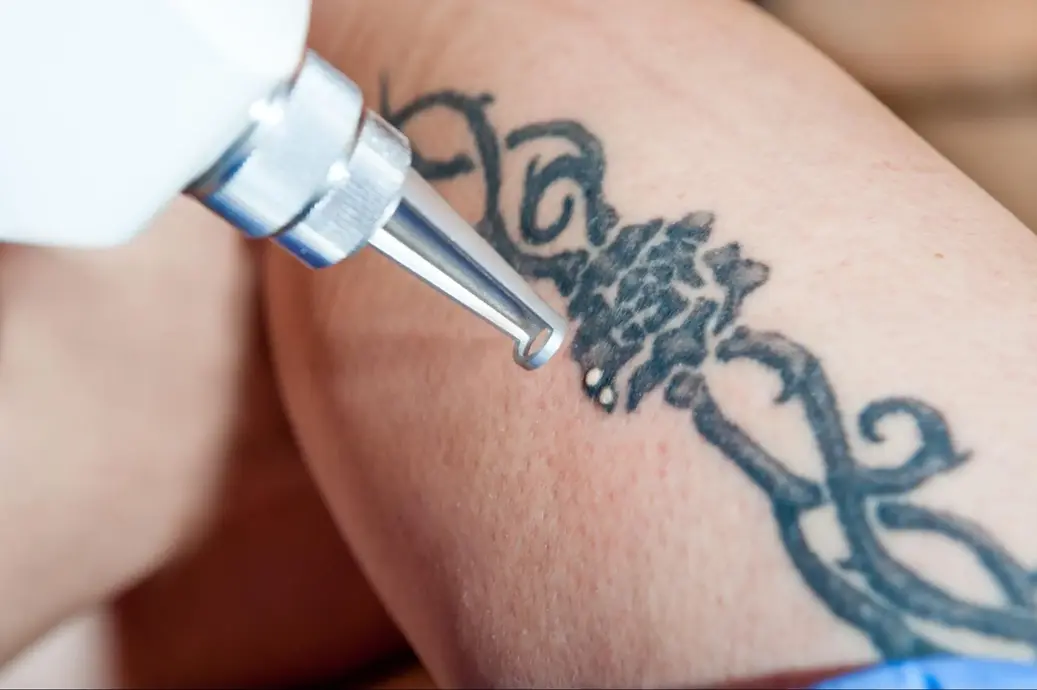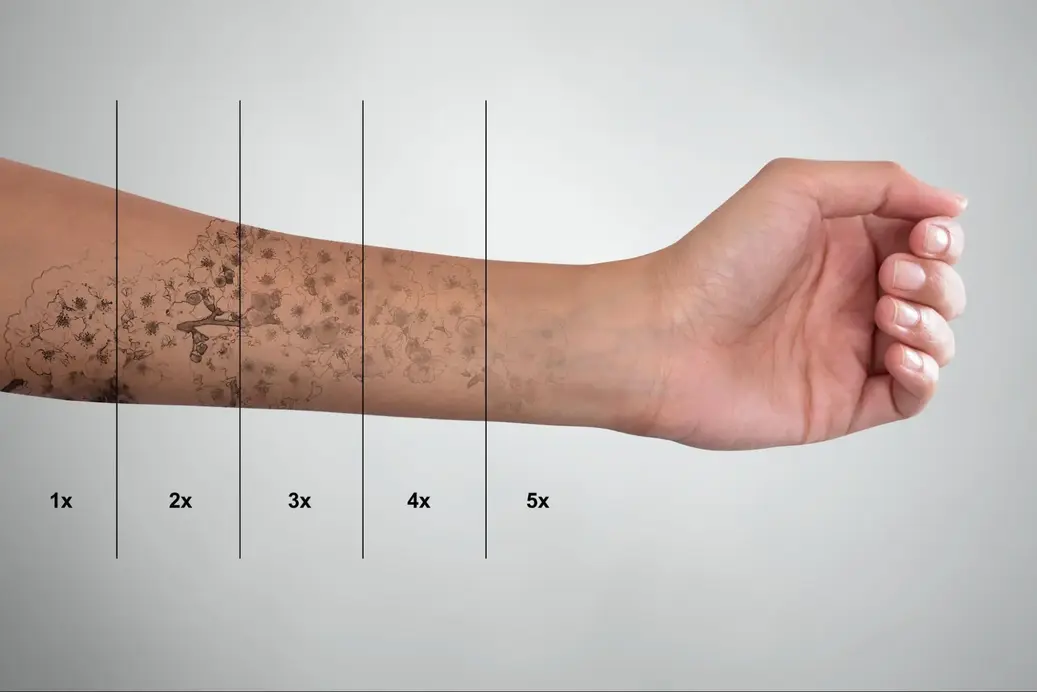
Tattoos are a form of self-expression, but over time, personal preferences, lifestyle changes, or professional requirements may make some individuals reconsider their ink. Whether it’s due to faded colors, a design that no longer resonates, or the desire for a fresh start, laser tattoo removal treatment offers an effective and safe solution. However, many people have concerns about its safety, effectiveness, and potential side effects.
If you are considering tattoo removal, you might be wondering: Is the procedure safe? Will it leave scars? How long does it take? This guide answers all your questions, helping you make an informed decision before booking your first session.
Laser tattoo removal is a medical procedure that uses concentrated beams of light energy to break down tattoo ink embedded in the skin. The laser targets the pigment, shattering it into tiny particles that are gradually eliminated by the body's natural filtration system. Over a series of treatments, the ink fades until it is no longer visible.
This technique is considered the gold standard for tattoo removal because it is non-invasive, precise, and effective on a wide range of ink colors. Unlike older methods such as dermabrasion or surgical excision, laser tattoo removal minimizes skin damage and reduces the risk of permanent scarring.
The laser works by emitting short, intense pulses of light that penetrate the skin and
selectively target tattoo ink. The ink particles absorb the laser energy and break apart into
smaller fragments. These tiny ink particles are then processed by the lymphatic system and
expelled from the body over time.
The surrounding skin and tissues remain unharmed, making laser removal a safe option for most
individuals. However, multiple sessions are required to achieve complete removal, as the ink is
broken down gradually with each treatment.

Yes, laser tattoo removal is safe when performed by a trained and certified professional using FDA-approved laser technology. The procedure has been extensively studied and is considered the most effective and least invasive way to remove unwanted tattoos. However, safety also depends on factors such as skin type, ink depth, color, and aftercare.
Understanding the step-by-step process can help you prepare for your first tattoo removal session and set realistic expectations.
Before your treatment begins, you will have a consultation with a dermatologist or laser specialist. During this session, they will:
A customized treatment plan will be created based on these factors, ensuring optimal results while minimizing risks.
The laser tattoo removal session itself is quick and straightforward, typically lasting 15 to 30 minutes, depending on the tattoo’s size and color complexity. Here’s what happens during the session:
After the session, the skin may appear red, swollen, or slightly blistered, which is a normal reaction. These effects typically subside within a few days with proper aftercare.
Tattoo removal is a gradual process, and multiple sessions are required for complete fading. The number of treatments depends on several factors, including:
On average, 5 to 10 sessions, spaced 4 to 6 weeks apart, are needed for full removal. Some individuals may require more or fewer sessions depending on their unique tattoo characteristics.
Like any cosmetic procedure, laser tattoo removal comes with minor side effects, but these are generally temporary and manageable. Common side effects include:
Rare but possible complications include infection, allergic reactions, or permanent scarring, which can be avoided by following aftercare instructions and choosing a qualified professional for the procedure.

Proper aftercare is essential to ensure safe healing and prevent complications. Here are some tips:
Laser tattoo removal is a safe, effective, and non-invasive method to erase unwanted ink. When performed by a skilled dermatologist, the procedure ensures minimal side effects and long-lasting results. While it requires multiple sessions and proper aftercare, the benefits far outweigh the risks.
If you’re considering tattoo removal, the first step is a professional consultation to determine the best treatment plan for your skin and tattoo type.
Book your appointment at Prime Skin Clinic today and take the first step toward clear, ink-free skin!